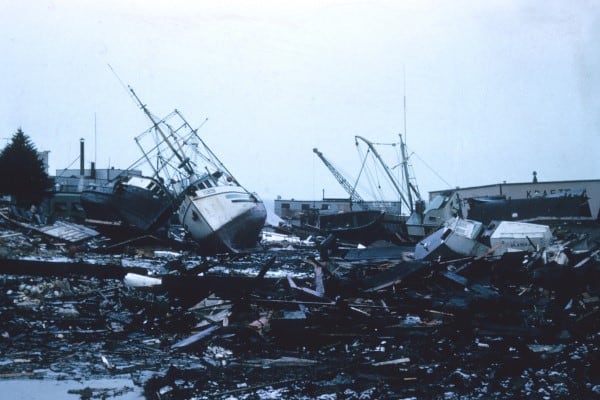This page contains affiliate links. This means if you a follow a link and make a purchase, at no additional cost to you, Humanitarian Careers will receive a commission. Thank you for supporting the site.
The definition of a humanitarian crisis is an event or multiple events that negatively impacts the health, safety and well-being of large numbers of people. However, this definition is fine for academics, but we see through the media many types of events described as humanitarian crisis.
In fact, there are many types of humanitarian crises. There are different kinds of events that all cause widespread loss of life, injury and destruction. We’ve put together a full breakdown of the different types of humanitarian crises and given current and historical examples of each…
War and Conflict
A major type of humanitarian crisis are war and conflicts. Organised armed violence results in loss of life, injury and damage to property, infrastructure and livelihoods. Large numbers of people affected by conflicts require international assistance. Humanitarian aid is often provided to people affected by wars.
Wars and conflicts affect huge amounts of people and therefore are often the cause of humanitarian crises. Human conflict is also one the most common types of humanitarian crises in the world today. Millions of people every year require humanitarian assistance as a result of armed violence.
As a major type of man-made humanitarian crises, people affected by wars and conflicts require urgent international assistance. Humanitarian crises caused by wars have an enormous impact on people, including deaths, destruction of property and political persecution. As a major type of humanitarian crises, most modern conflicts result in extensive humanitarian responses.
Armed violence also causes human displacement, another kind of humanitarian crises.
Some examples of the type of humanitarian crises that are caused by armed violence include:
Famine
Another major type of humanitarian crises is famine. Famines are where huge numbers of people are not able to source food. The result is death and disease, as well as loss of livelihoods and human migration. Famines are a type of humanitarian crises because they effect large number of people and require international assistance.
The reasons for famines as humanitarian crises can vary widely. There is also an ongoing debate about whether famines are mad-made or naturally caused humanitarian crises. However, all famines result in large-scale loss of life, destruction of communities and human hardship, and so are a key type of humanitarian crises.
People affected by famines experience starvation, malnutrition and a rise in disease. Famines have extensive and long-term impacts on communities and are an important kind of humanitarian crisis.
The number of people dying from famine have dropped since 2000, however currently there are still 690 million of people in the world experience famine or who are close to starvation.
Famines as humanitarian crises can be caused by many things. These include other types of humanitarian crises such as wars, economic crises, extreme weather events or political crises.
Throughout history there have been many examples of famines. Some of these are:
Earthquakes
Earthquakes can be a type of humanitarian crises. When earthquakes hit populations that are not resilient to their impact a humanitarian crisis can occur.
An earthquake hitting a vulnerable community can result in large scale loss of life, injury and destruction of property and livelihoods. There can also be extensive infrastructure damage as a result of an earthquake. All these factors can make earthquakes a significant humanitarian crisis.
Importantly though, a humanitarian crisis occurs when a populations resilience is overcome. Therefore, not all earthquakes result in a humanitarian crisis. Some countries, such as Japan and Taiwan, experience earthquakes but have developed strategies to minimise their impacts, so humanitarian cries do not often occur there. This differs from countries such as Nepal, where the population is more vulnerable and earthquakes can result in a humanitarian crisis.
This means that earthquakes are still a key type of humanitarian crises. However, they are only a humanitarian crisis in countries that have not developed buildings, infrastructure and systems to minimise their impacts or countries that do have protections but are hit by a huge earthquake that overcomes them.
Examples of earthquakes as a type of humanitarian crisis include:
Humanitarian Aid Online Courses
If you want to learn more about humanitarian aid, including the different types of crises, we highly recommend the online course When Disaster Meets Conflict by the Erasmus University Rotterdam. We think it’s one of the best overviews of the humanitarian sector. Follow the link to the course’s page for more information.
The International Humanitarian Law Theory and Practice online course offered by Leiden University in the Netherlands provides a fantastic theoretical overview of humanitarianism. We think it’s one of the top online courses for those who want to understand the basics of international humanitarian law. Click the link to visit the course’s page for more information.
If you are looking to work in humanitarian aid, we highly recommend the online course International Humanitarian and Development Careers. We think it also provides a great overview of the humanitarian sector and gives valuable insights for those searching for jobs in humanitarian aid. Follow the link to the course’s page for more information.
Floods
Floods can be another type of humanitarian crises.
When large areas are affected by floods huge numbers of people can be forced to move. There can also be extensive damage to crops, businesses, houses and livelihoods. When large numbers of people are affected by flooding it can cause a humanitarian crisis.
Like earthquakes, floods are a type of humanitarian crises that occurs when a vulnerable population is affected. Many communities have developed protections against flooding. However, when a community without protection, or a community’s flood protections are breached, a humanitarian crisis can occur.
For floods to cause a humanitarian crisis, large numbers of people must be affected. Flooding that results in humanitarian crisis is often linked to other types of humanitarian crises, especially extreme weather events.
Extreme flooding can cause other types of humanitarian crises, such as human displacement. When flooding occurs, crops, homes and livelihoods are destroyed, and this can often mean people leave their communities and migrate.
Some examples of flooding as a type of humanitarian crisis include:
Extreme Weather
Extreme weather events are a type of humanitarian crises. Extreme weather usually covers cyclone, hurricanes and typhoons, but can also mean other large climatic events that can cause wide-spread destruction.
Humanitarian crises can be caused by extreme weather when storms hit populations that are vulnerable to their impacts. Major storms can cause wide-spread death, injury and damage to property and infrastructure. Many people can also lose their livelihoods and businesses when storms damage communities.
Like with floods and earthquakes, many populations have developed defences against extreme weather events which limit humanitarian crises. Countries such as the US and Japan are hit by major storms but rarely result in a humanitarian crisis.
On the other hand, poorer countries such as Indonesia, Sri Lanka and Bangladesh are less resilient to extreme weather events. This means humanitarian crises occur more frequently.
Importantly, even countries with defences against extreme weather events can still experience humanitarian crises. This happens when extreme weather overcomes the defences and results in large scale destruction and loss of life.
Some key examples of this types of humanitarian crises caused by extreme weather include:
Human Displacement
An important type of humanitarian crises is human displacements. When large numbers of people are forced to flee their homes, it is a significant crisis.
Refugees and internally displaced people can be caused by wars and conflicts, extreme weather events, economic hardship, political crises or famines and poverty. There are a huge range of events that can cause large numbers of people to migrate.
As a type of humanitarian crises, human displacement has an extensive range of impacts. There is the human tole taken on the people who flee. Often people leave with very little and are in urgent need of support as they migrate. There is also the burden on the communities that host large numbers of displaced people, who often lack the economic resources to support the influx.
Human displacements as a type of humanitarian crisis is one of the major challenges of our age. There are currently around 80 million displaced people in the world. Many refugees and displaced people spend decades unable to return home. Unless international resources are mobilised to create the contexts in which displaced people can return, human displacement will remain a major type of humanitarian crises.
Below are some examples of human migrations as a type of humanitarian crises:
Pandemics
Another type of humanitarian crisis can be a pandemic.
When diseases spread through populations, they can cause huge numbers of deaths. They can also impact health systems that often are not able to cope with the increase in demand. Pandemics can also disrupt communities as people move to get away from areas of disease outbreak.
The human, economic and societal impacts of pandemics make them an important type of humanitarian crises.
Like many types of humanitarian crises, pandemics must overcome the resilience of a community in order to be considered as humanitarian emergency. All societies encounter diseases regularly but countries with robust health systems are able to provide assistance to their citizens.
A pandemic causes a humanitarian crisis when a disease spreads in a population that is vulnerable to its impacts. This means poorer countries, or countries experiencing other types of humanitarian crises such as famines, conflicts or economic crises are more likely to experience pandemic crises.
There are many examples of pandemics as humanitarian crises. Some of these are:
Tsunamis
A tsunami is a huge wave or series of waves that strikes a shoreline. Tsunamis are enormous and cause extensive destruction in the coastal areas they hit. Tsunamis can be a major type of humanitarian crises as they cause many deaths, injuries and damage to property.
As a type of humanitarian crises, tsunamis can cause widespread devastation in the communities they strike. As tsunami’s hit along the coastline, this means humanitarian crises that follow can be spread over a huge area. Very large tsunamis can also hit multiple countries, further increasing the size and scale of the humanitarian crises.
Tsunamis are usually caused by earthquakes under the sea pushing a huge mass of water towards the shore. Many tsunamis come in multiple waves, further increasing the damage they can do. As a type of humanitarian crises, a tsunami can be one of the worst to hit coastal communities.
Like many types of humanitarian crises, tsunamis are worse when they hit populations that do not have protections in-place. Richer nations affected by tsunamis can develop early warning systems limiting the potential for a humanitarian crisis. However, if the scale of the tsunami overcomes these defences, a humanitarian crisis can still result.
Example of tsunamis as a type of humanitarian crisis include:
Economic Crisis
The definition of an economic, or financial, crisis is an event in which assets, such as property or money lose a large part of their value. The results are wide ranging, including rising unemployment, increased poverty, reduction in services and limits on government spending.
A severe economic crisis is a type of humanitarian crises as it can inflict large scale suffering on huge numbers of people.
As a type of humanitarian crises, economic collapses can result in many people being made destitute. They also destroy people’s livelihoods, as well as limit the ability of the national government to respond and assist people.
Economic crises can also be linked to other types of humanitarian crises. These can include migrations and refugee crises – as people move in large numbers to better economic areas. They can also limit a governments response to pandemics, as well as cause famines.
As well as economic crises resulting in many types of humanitarian crises, they can also be caused by different humanitarian crises. For example, conflicts, political crises and many types of disasters can be following by an economic crisis.
Some examples of economic collapses as humanitarian crises include:
Political Crisis
A political crisis is when the normal functioning of government is disrupted by political disturbances. Political crises can take many forms, including street protests, riots, disputed elections, government collapse and political deadlock.
As a type of humanitarian crises, political crises are usually combined with other forms of events. For example, political crises are often combined with economic crises, or result in wars and conflicts. The combination of these events is usually what results in a humanitarian crisis.
A humanitarian crisis requires a large number of people to be negatively affected by an event. Although some protracted political unrest can result in this, often street protests, riots and political instability alone do not meet the criteria of a humanitarian crises. However, political crises are often the starting point for chain of events that, combined with other types of humanitarian crises, can cause large scale death, injury and destruction.
Political crises are caused for many complex reasons. They are usually the result of long-term, systemic political issues and come about due to a lack of inclusivity and dialogue among political actors.
Examples of political crises that have led to a wide range of humanitarian crises include:
Environmental
The final type of humanitarian crises is caused by an environmental crisis. An environmental crisis is an event that results in the destruction, degradation or pollution of nature. This includes both plant and animal life.
As a type of humanitarian crises, environmental destruction can take two main forms.
The first way a humanitarian crisis is caused by an environmental event is a sudden destruction of ecology. This could include a sudden polluting event, such as a nuclear leak. These types of environmental humanitarian crises happen quickly and have an immediate effect on people’s lives.
The second type of environmental humanitarian crisis is long term. This mainly covers events related to global climate change. These types of humanitarian crises are caused by slower changes in the environment. As a result, farming, life-stock and nature are all corroded. We can begin to see humanitarian crises occurring as a result of the climate emergency.
Like many types of humanitarian crises, environmental emergencies usually result in other kinds of humanitarian crises. Often, environmental crises may result in famines or conflicts.
Examples of the types of humanitarian crises related to environmental destruction include:
If you want to learn more about humanitarian aid, explore our list of the top humanitarian aid online courses here.





